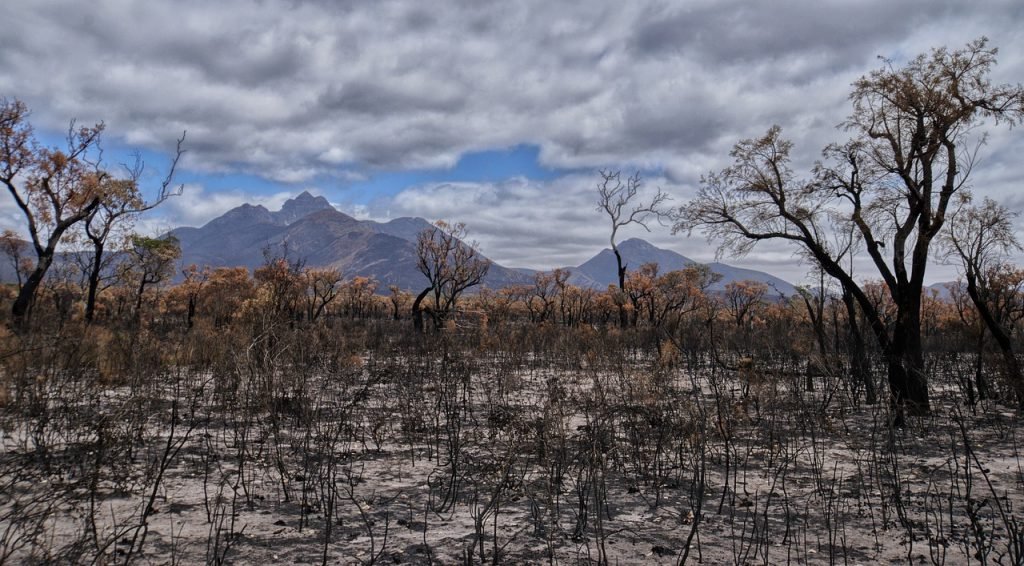what nations can learn from australia bushfire?

We have seen enough of what has been happening in forests of Amazon, US state of California and more significantly recently in Australian bushfire episode.
All through these climate crises, the common strands include widespread damages in the forests, long spells of droughts, severe cyclones and hosts of climatic episodes in general accentuated by large scale collateral damages evidenced in loss of human and wild lives and destruction of biodiversity which is difficult to be retrieved.
What is lost is lost beyond the human ability and its imagination to be able to compensate for the loss in any conceivable way.

Let’s look at the current Australian bushfire episode that has damaged more than 6 million hectares of forests, reported human deaths of more than 50 people with more than one million wild lives lost alongside a staggering pall of air pollution that potential seems to have become a transboundary issue between Australia and New Zealand.
This is by no stretch of the imagination a small event to be witnessed in what has happened but also due to the sheer impact, enormity and scale of distraction and devastation that followed in its wake.
It has indeed been difficult for Australian Government to be able to put a value on the total loss incurred due to the bushfires in the country and resurrection of a viable plan on the restoration of normalcy both domestically and in the region. More than anything else, the public wrath on skewed preparation by the government to do the needful during such an episode also highlights political ramification on the state of government that gnawed out in the open.
The question however being debated is: whether or not the bushfires have anything to do with almost regular patterns of climate change and environmental crisis occurring with heightened velocity, loss of lives and sheer scale of destruction which is neither numerically easy to be calculated nor commercially viable to be insured to compensate for losses in such an aftermath.

Moreover, climate change is now evidenced to be a global episode with fast-changing environmental conditions prevailing in conditions such as grass growth in the Himalayan region to less snowfall in Moscow to changing weather patterns across continents testify to climate change phenomena beyond doubt. With climate scientists and environmentalists almost consensual on the occurrence of natural disasters being climate-related and its associated risks, there remains a little room for any deviation for key stakeholders including but not limited to the national governments and the international community to any further life in any denial about the climate risks.
Consider this:
In 2019, short-term weather fluctuations in the Indian Ocean—the Indian Ocean Dipole, pushed moist ocean air away from Australia’s shores, causing severe drought, and drying out the leaves, sticks and soil on the bush floor.
This phenomenon coincided with unusually strong and sustained winds associated with a separate phenomenon known as the Antarctic Oscillation, pushing fires in every direction occurring amid a steady increase in average temperatures across Australia.
Climate science over the period has proved that long-term climate-change trends will increasingly interact disastrously with short-term climate phenomena in a way that catalyses and exacerbates extreme weather events. This is perhaps a regular and repetitive episode shaping up around the world calling out for a coordinated action within nations, across regions and including but not limited at international levels.
The crisis of climate change is no longer one person’s or one nation’s challenge but a crisis that covers every nation across regions in varying degrees and measures. The fact is that no one is untouched with the crisis as it subsumes everyone and everywhere.
The fact the climate change is also jeopardising cities, habitats and biodiversity in an unprecedented manner with more distasteful impacts in offing on people and places particularly near rivers, seas and low lying areas threatening almost half of the world population.
With UN estimating that many cities and habitats near the seashores seriously suffer from the potential crisis of their disappearance by 2050. There is a little room for climate naysayers as the situation continues to get serious with each new episode. It is also estimated that cost and consequences that await the humanity over time can be many times more at its current levels with tremendous impact on health, air and water the combined effect can be hard to imagine.
As they say, the train has already left the station and reversal in the onset of adverse climatic cycles has since begun, only coordinated and collective actions can potentially hold the threat of outright life-threatening consequences for all of us.
What nations should do?
The correction in such a fast deteriorating climatic situations warrants strong national resolve and robust international cooperation through multilateral binding climate treaties such as Paris agreement, sustainable development goals and other such conventions and protocols while keeping politics of populism beyond narrow interests.
Nations will be judged tomorrow by what action they take today to save the Mother Earth for future progenies, regardless of their location, circumstances and resolve to combat this fast-emerging climate crisis.
Choices are no longer many and the time available is too short to act.

